Breeding freshwater fish can be a captivating hobby for aquarium enthusiasts. Whether you’re a beginner or an experienced aquarist, starting with easy-to-breed fish species is a wise choice. This comprehensive article will explore 12 of the easiest freshwater fish to breed successfully.
1. Guppy (Poecilia reticulata)
- Overview: Guppies are popular and vibrant livebearers known for their colorful appearance and peaceful temperament.
- Breeding Ease: Guppies are one of the easiest freshwater fish to breed due to their live-bearing nature, making them ideal for beginners.

Ease of Breeding: Very Easy
Adult Size: 1.5 – 2.5 inches
Temperature Range: 72-82°F (22-28°C)
Tank Size (Minimum): 10 gallons
Special Considerations: Provide hiding spots for fry
Guppies are often hailed as one of the easiest freshwater fish to breed, making them an excellent choice for beginners. Their small size, vibrant colors, and hardiness make them a popular choices among aquarists. Guppies are livebearers, which means they give birth to live fry rather than laying eggs. This simplifies the breeding process considerably. To ensure successful breeding, provide plenty of hiding spots for the fry to evade potential predators in the community tank.
How many fry can a female guppy produce?
A female guppy can produce anywhere from 20 to 100 fry in a single brood, depending on her age and size.
2. Platy (Xiphophorus spp.)
- Overview: Platies come in various colors and patterns, adding beauty to any aquarium, and they are known for their friendly behavior.
- Breeding Ease: Platies are livebearers like guppies, making their breeding process uncomplicated for beginners.
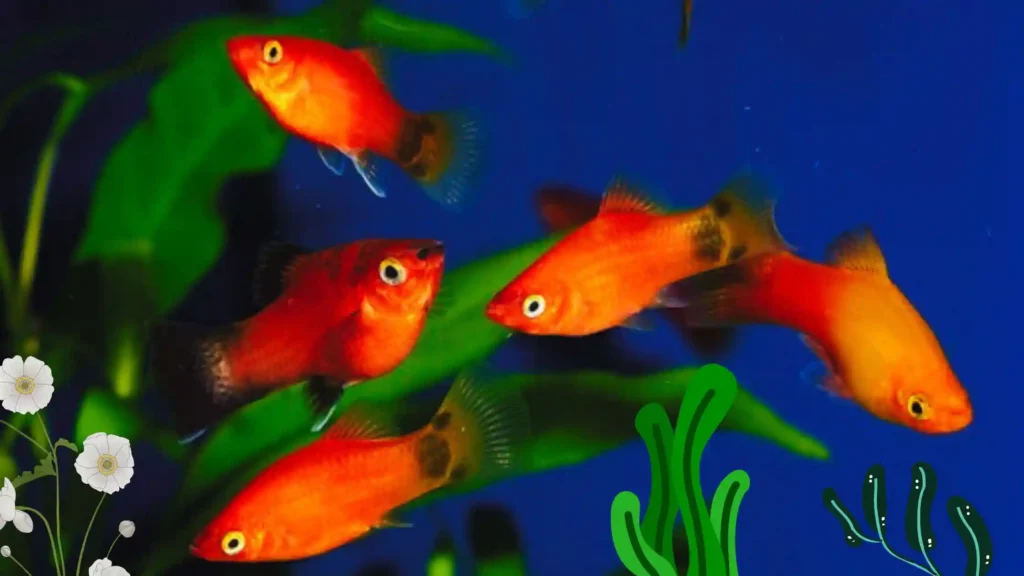
Ease of Breeding: Easy
Adult Size: 2 – 3 inches
Temperature Range: 72-78°F (22-26°C)
Tank Size (Minimum): 10 gallons
Special Considerations: Ensure a balanced diet
Platies are known for their colorful appearance and peaceful nature, making them ideal for community tanks. Breeding platies is relatively simple, making them suitable for beginners. To encourage successful breeding, maintain a balanced diet, and maintain stable water conditions. Platies are livebearers, and a single female can produce multiple batches of fry without the need for specialized care.
3. Molly (Poecilia sphenops)
- Overview: Mollies are attractive fish with diverse color variations and are generally peaceful in community setups.
- Breeding Ease: Mollies are livebearers and relatively easy to breed, but they require slightly brackish water for optimal breeding conditions.
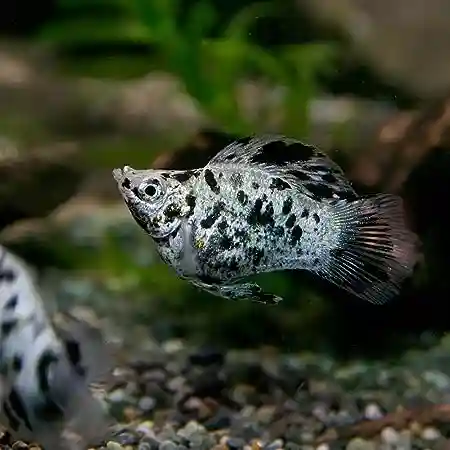
Ease of Breeding: Easy
Adult Size: 3 – 4 inches
Temperature Range: 72-78°F (22-26°C)
Tank Size (Minimum): 20 gallons
Special Considerations: Choose between freshwater or brackish
Mollies are known for their adaptability and come in various colors. They are livebearers, simplifying the breeding process. One unique aspect of mollies is that they thrive in fresh and brackish water. Choose the appropriate environment for your mollies based on your preferences and their specific species.
4. Swordtail (Xiphophorus hellerii)
- Overview: Swordtails are elegant fish known for their distinctive sword-like tail, and they are peaceful community members.
- Breeding Ease: Swordtails, being livebearers, are simple to breed, making them suitable for beginner breeders.
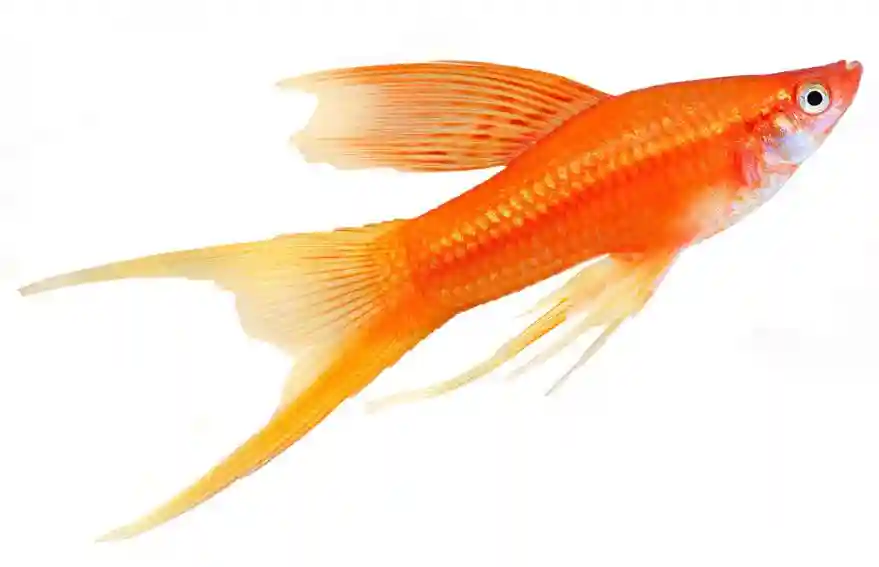
Ease of Breeding: Easy
Adult Size: 3 – 4 inches
Temperature Range: 72-82°F (22-28°C)
Tank Size (Minimum): 20 gallons
Special Considerations: Maintain a male-to-female ratio
Swordtails are prized for their elegant, sword-like tails and peaceful temperament. They are relatively easy to breed, but it’s essential to maintain the right male-to-female ratio to avoid stressing the females. Provide a spacious tank with plenty of hiding spots and plants to mimic their natural habitat. Swordtails are livebearers, and once the female gives birth, ensure the fry has safe places to hide.
5. Betta (Betta splendens)
- Overview: Betta fish, also known as Siamese fighting fish, are renowned for their stunning colors and elaborate fins.
- Breeding Ease: Breeding bettas can be slightly more challenging due to the aggressive nature of males towards each other. However, with proper setup and conditioning, successful breeding is possible.
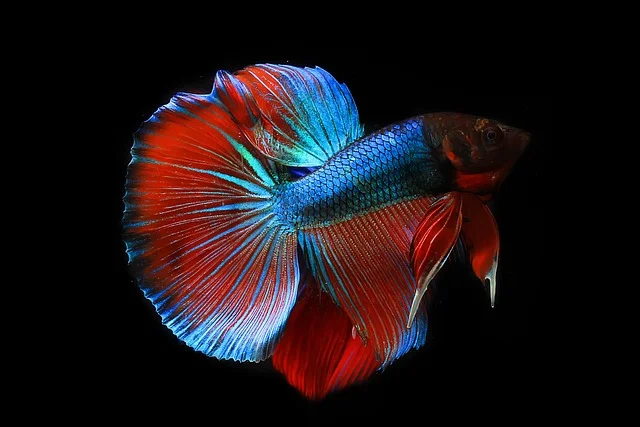
Ease of Breeding: Moderate
Adult Size: 2 – 3 inches
Temperature Range: 75-82°F (24-28°C)
Tank Size (Minimum): 5 gallons
Special Considerations: Separate males and females
Betta fish, also known as Siamese fighting fish, are admired for their vibrant colors and elegant fins. While breeding bettas may require slightly more attention compared to some other species, it’s a rewarding experience. To breed bettas successfully, keep males and females separate until the breeding process begins. Once the male constructs a bubble nest, carefully introduce the female to initiate breeding.
6. Corydoras Catfish (Corydoras spp.)
- Overview: Corydoras catfish are small, peaceful bottom-dwellers loved for their adorable appearance and scavenging behavior.
- Breeding Ease: Corydoras catfish are relatively easy to breed, but they require specific conditions such as clean, well-oxygenated water and soft substrate.
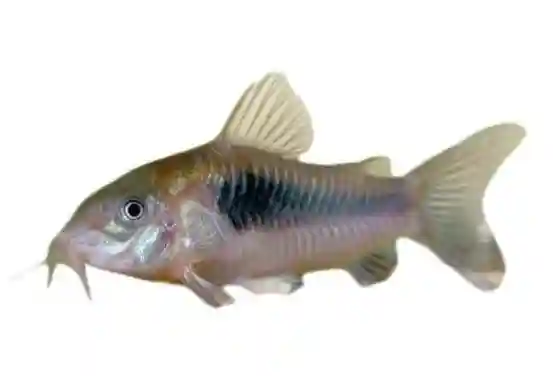
Ease of Breeding: Easy
Adult Size: 2.5 – 3 inches
Temperature Range: 72-78°F (22-26°C)
Tank Size (Minimum): 20 gallons
Special Considerations: Use fine substrate for their barbels
Corydoras catfish are not only excellent bottom-dwelling fish but are also relatively easy to breed. These playful and social fish thrive in groups, so it’s recommended to keep them in schools of at least six individuals. When breeding Corydoras, provide a well-maintained tank with a sandy or fine substrate to protect their delicate barbels. A separate breeding tank with slightly cooler water may stimulate spawning.
7. Cherry Shrimp (Neocaridina davidi)
- Overview: Cherry shrimp are popular freshwater shrimp species known for their bright red coloration and algae-eating habits.
- Breeding Ease: Cherry shrimp are exceptionally easy to breed, making them an excellent choice for aquarists of all levels.
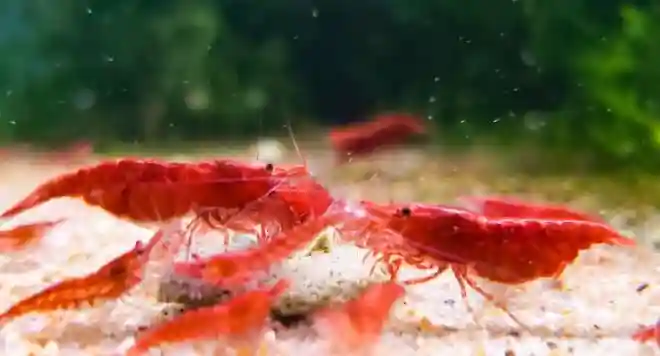
Ease of Breeding: Very Easy
Adult Size: 1 – 1.5 inches
Temperature Range: 65-80°F (18-27°C)
Tank Size (Minimum): 5 gallons
Special Considerations: Provide hiding places
Cherry shrimp are incredibly easy to breed, making them a favorite choice for aquarists interested in adding diversity to their tanks. These small crustaceans come in vibrant red colors and help maintain a clean aquarium by consuming algae. Breeding cherry shrimp typically happens in the main tank, as they are hardy and adapt to various water conditions. Provide hiding places such as plants and decorations to offer protection for young shrimp.
8. Kribensis Cichlid (Pelvicachromis pulcher)
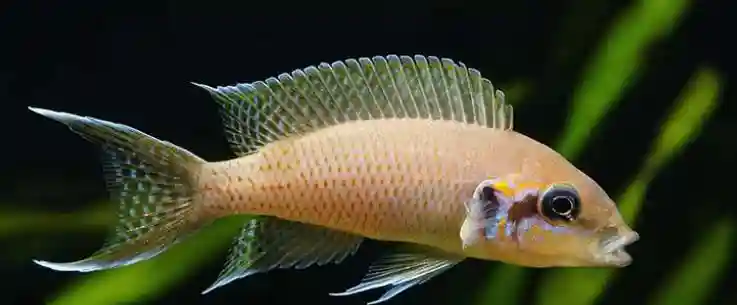
Ease of Breeding: Moderate
Adult Size: 3 – 4 inches
Temperature Range: 75-81°F (24-27°C)
Tank Size (Minimum): 30 gallons
Special Considerations: Include caves for breeding
Kribensis cichlids are known for their vibrant colors, unique behaviors, and relatively easy breeding process. To encourage successful breeding, create a setup that mimics their natural habitat, including caves for them to spawn in and protect their fry. Maintaining stable water conditions is essential, and offering a balanced diet will ensure the health of the adults and their offspring.
9. Bristlenose Pleco (Ancistrus spp.)
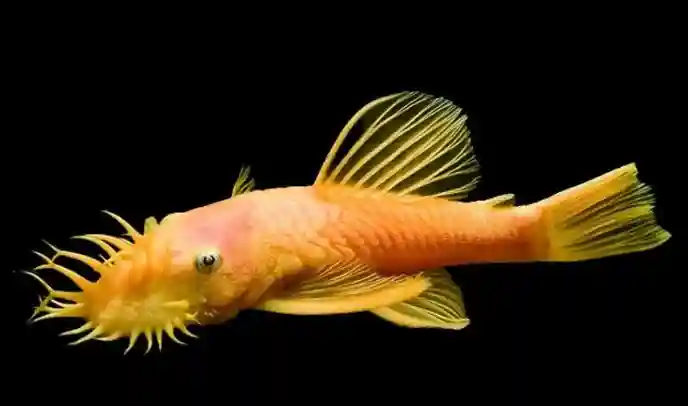
Ease of Breeding: Easy
Adult Size: 4 – 6 inches
Temperature Range: 72-78°F (22-26°C)
Tank Size (Minimum): 20 gallons
Special Considerations: Ensure sufficient hiding spots
Bristlenose plecos are known for their distinctive appearance and algae-eating habits. They are relatively easy to breed, making them a practical addition to any aquarium. To encourage breeding, provide hiding spots in the form of caves or driftwood. Bristlenose plecos are peaceful and can coexist with other fish, making them a valuable addition to a community tank.
10. White Cloud Mountain Minnow (Tanichthys albonubes)
- Overview: White Clouds are small, peaceful fish that thrive in cooler water temperatures.
- Breeding Ease: White Clouds are relatively easy to breed, but they may require a separate breeding tank for optimal results.

Ease of Breeding: Very Easy
Adult Size: 1.5 – 2 inches
Temperature Range: 64-72°F (18-22°C)
Tank Size (Minimum): 10 gallons
Special Considerations: Keep in a cooler aquarium
White Cloud Mountain minnows are small, peaceful fish that are incredibly easy to breed. They thrive in cooler water temperatures, making them ideal for unheated tanks or cooler regions. These minnows are known for their red and gold coloration. Provide a well-planted tank with plenty of swimming space and maintain stable water conditions for successful breeding.
11. Zebra Danio (Danio rerio)
- Overview: Zebra danios are active and hardy fish, recognized for their striking blue and silver stripes.
- Breeding Ease: Zebra danios are egg-scattering fish, and while they may breed spontaneously in a well-maintained aquarium, a separate breeding tank can increase fry survival.
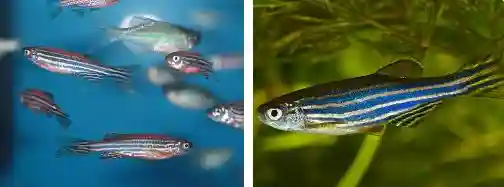
Ease of Breeding: Easy
Adult Size: 2 – 2.5 inches
Temperature Range: 64-74°F (18-23°C)
Tank Size (Minimum): 10 gallons
Special Considerations: Maintain a group for social behavior
Zebra danios are lively, striped fish that are well-suited for breeding in home aquariums. They are known for their striking patterns and active swimming behavior. To encourage breeding, keep them in a group of at least six individuals. Provide a well-filtered tank with clean water and a diet rich in protein. Zebra danios readily lay eggs in the aquarium, and the fry is usually easy to rear.
12. Endler’s Livebearer (Poecilia wingei)
- Overview: Endler’s livebearers are closely related to guppies and display a dazzling array of colors and patterns.
- Breeding Ease: Endler’s livebearers are effortless to breed, and they can interbreed with guppies, so be cautious if you want to maintain pure strains.
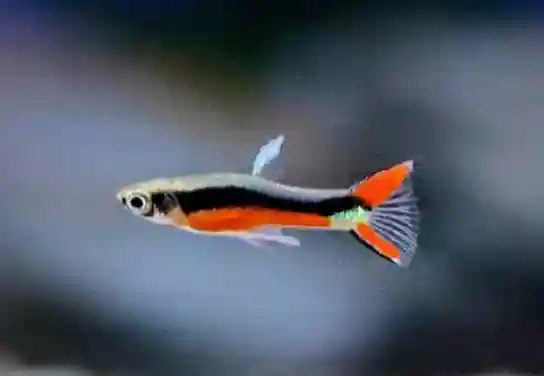
Ease of Breeding: Very Easy
Adult Size: 1 – 1.5 inches
Temperature Range: 72-78°F (22-26°C)
Tank Size (Minimum): 5 gallons
Special Considerations: Keep males and females together
Endler’s Livebearers are closely related to guppies and share their ease of breeding. These small, colorful fish are perfect for smaller tanks. Unlike some species, keeping males and females together is not an issue, as they generally coexist peacefully. Provide a well-planted tank to offer hiding spots for fry.
Comparison Table: The Easiest Freshwater Fish to Breed
| Fish Species | Ease of Breeding | Adult Size | Temperature Range | Tank Size (Minimum) | Special Considerations |
|---|---|---|---|---|---|
| Guppy | Very Easy | 1.5 – 2.5 inches | 72-82°F (22-28°C) | 10 gallons | Provide hiding spots for fry |
| Betta Fish | Moderate | 2 – 3 inches | 75-82°F (24-28°C) | 5 gallons | Separate males and females |
| Platies | Easy | 2 – 3 inches | 72-78°F (22-26°C) | 10 gallons | Ensure a balanced diet |
| Swordtail | Easy | 3 – 4 inches | 72-82°F (22-28°C) | 20 gallons | Maintain a male-to-female ratio |
| Mollies | Easy | 3 – 4 inches | 72-78°F (22-26°C) | 20 gallons | Choose between freshwater or brackish |
| Endler’s Livebearer | Very Easy | 1 – 1.5 inches | 72-78°F (22-26°C) | 5 gallons | Keep males and females together |
| Corydoras Catfish | Easy | 2.5 – 3 inches | 72-78°F (22-26°C) | 20 gallons | Use fine substrate for their barbels |
| Cherry Shrimp | Very Easy | 1 – 1.5 inches | 65-80°F (18-27°C) | 5 gallons | Provide hiding places |
| Kribensis Cichlid | Moderate | 3 – 4 inches | 75-81°F (24-27°C) | 30 gallons | Include caves for breeding |
| Bristlenose Pleco | Easy | 4 – 6 inches | 72-78°F (22-26°C) | 20 gallons | Ensure sufficient hiding spots |
| White Cloud Mountain Minnow | Very Easy | 1.5 – 2 inches | 64-72°F (18-22°C) | 10 gallons | Keep in a cooler aquarium |
| Zebra Danio | Easy | 2 – 2.5 inches | 64-74°F (18-23°C) | 10 gallons | Maintain a group for social behavior |
Conclusion
The comparison table above provides a concise overview of the easiest freshwater fish to breed, along with their specific characteristics and breeding requirements. Whether you are a beginner or an experienced aquarist, choosing the right fish species can significantly contribute to the success and enjoyment of your breeding endeavors. Remember to create suitable environments, pay attention to water parameters, and provide proper care to ensure the well-being and thriving of your homebred fish.
Frequently Asked Questions (FAQs)
What is the fastest freshwater fish to breed?
The guppy (Poecilia reticulata) is often considered the fastest freshwater fish to breed. It has a short gestation period and produces numerous fry in each brood.
Which fish is easiest to breed?
The guppy (Poecilia reticulata) is also the easiest fish to breed, making it an ideal choice for beginners. They are livebearers, simplifying the breeding process.
What is the easiest freshwater fish to have?
The betta fish (Betta splendens) is one of the easiest freshwater fish to have in an aquarium. They are hardy and adaptable to various water conditions.
What is the easiest egg-laying fish to breed?
The platy (Xiphophorus spp.) is one of the easiest egg-laying fish to breed. They are livebearers and do not require extensive care for their eggs like some other species.
Can I keep Endler’s livebearers with guppies in the same tank?
Yes, you can keep Endler’s livebearers and guppies together, but keep in mind potential interbreeding.
How long does it take for zebra danio eggs to hatch?
Zebra danio eggs typically hatch within 48 to 72 hours after being laid.
Can I breed different varieties of mollies together?
Yes, you can breed different types of mollies together, which may result in fascinating color combinations in the offspring.
Do swordtails require a separate breeding tank?
While it’s not necessary, providing a separate breeding tank with hiding spots can increase fry survival rates.
Can I keep a male and female betta together at all times?
It is not advisable to keep a male and female betta together outside of the breeding process, as they may become aggressive towards each other.
Do cherry shrimp require a heavily planted tank for breeding?
While live plants provide hiding spots for baby shrimp, cherry shrimp can breed in tanks with minimal plants as well.
What water temperature is ideal for breeding white cloud mountain minnows?
White Clouds prefer water temperatures between 64°F to 72°F (18°C to 22°C) for breeding.
How many eggs do corydoras lay during breeding?
Corydoras catfish are egg layers and can lay anywhere from 50 to 200 eggs during the breeding process.
How can I distinguish between male and female platies?
Male platies have a modified anal fin called a gonopodium, while females have a regular fan-shaped anal fin.





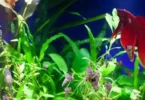

Leave a Comment
You must be logged in to post a comment.